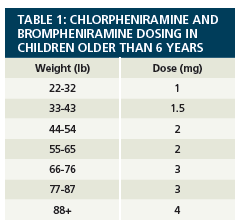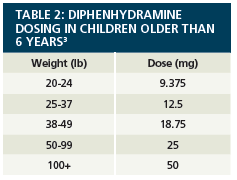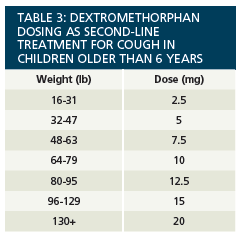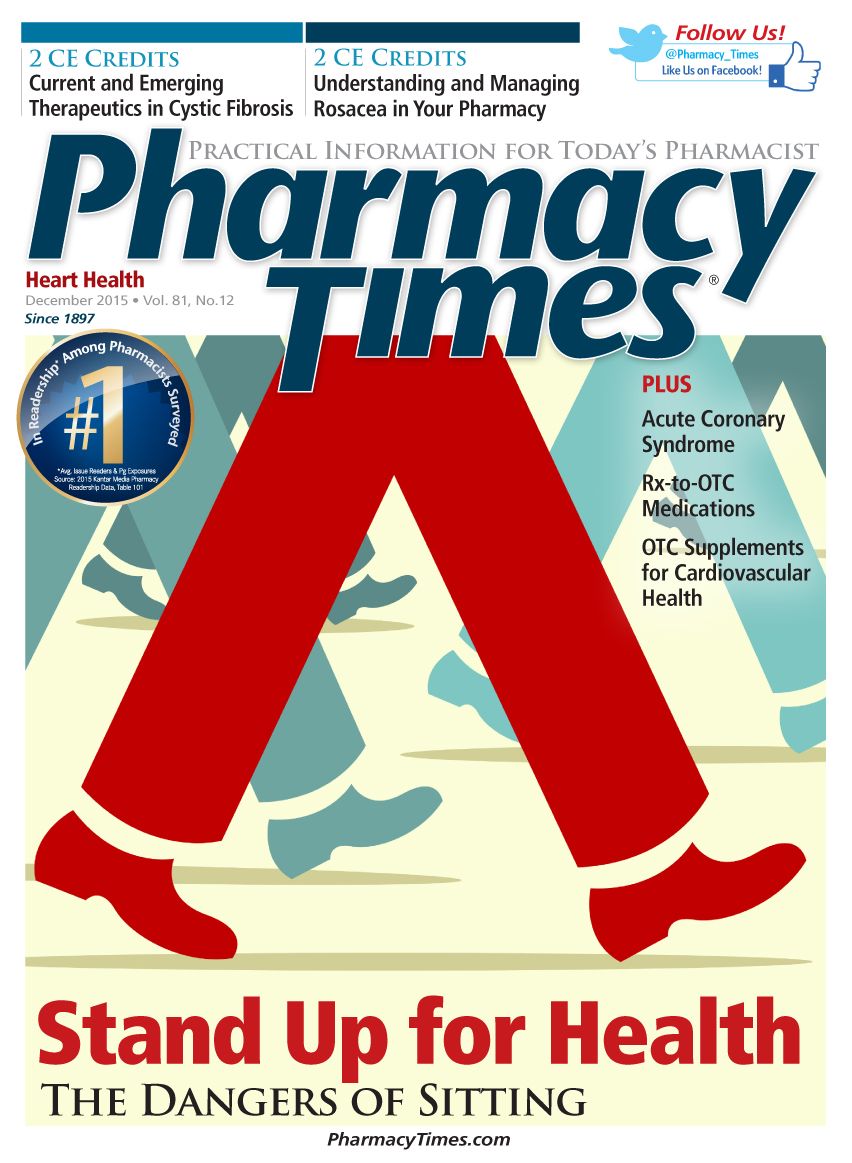Publication
Article
Pharmacy Times
Cough and Cold Concoctions: Making the Correct Choice
Author(s):
As pharmacists, we have additional responsibilities to ensure that all patients, regardless of age, receive safe and effective therapy.

Before October 7, 2008, labels on OTC products indicated that products should not be used in children younger than 2 years. Because of a lack of clear directions, fatal cases occurred in children and were linked to overdoses or unsupervised ingestions of OTC cough and cold products.1 Since the Consumer Healthcare Products Association made 2 major announcements:
- Manufacturers of pediatric OTC cough and cold products voluntarily modified their labels to indicate they should not be used in children younger than 4 years.
- The FDA and the Centers for Disease Control and Prevention would create educational materials for parents, caregivers, and health care providers.
As pharmacists, we have additional responsibilities to ensure that all patients, regardless of age, receive safe and effective therapy.
Antihistamines
When the body is exposed to allergens, such as pollen, mold, and ragweed, the allergen binds to and activates IgE. Upon activating IgE, basophils and mast cells release histamine and subsequent inflammatory mediators, ultimately resulting in allergic rhinitis (AR). The most common manifestations of AR include conjunctivitis, rhinorrhea, nasal congestion, coughing, wheezing, sneezing, or headache.2

To properly treat symptoms, antihistamines are given to reversibly antagonize the activation of histamine- 1 receptors in the respiratory, gastrointestinal, and cardiovascular tracts. In mild cases, they are given on an as-needed basis. Oral antihistamines are divided into first-generation antihistamines (FGAs) and second-generation antihistamines (SGAs), with SGAs preferred over FGAs due to better safety profiles. FGAs, such as chlorpheniramine, diphenhydramine, and brompheniramine, are lipophilic and readily cross the blood—brain barrier, resulting in sedation and cognitive impairment. Adverse effects (AEs) include drowsiness, dizziness, insomnia, and nervousness.
Although SGAs have a lower incidence of AEs, SGAs are ineffective at lessening cough associated with the common cold and, therefore, should not be used. If a child displays any cold symptoms, FGAs should not be used because they have no proven, published clinical benefits. Moreover, if the child is younger than 6 years, the FDA recommends pediatric patients receive only 1 antihistamine at a time, and even then, only those with 1 ingredient.3 Chlorpheniramine and brompheniramine should be given every 6 to 8 hours as needed, although brompheniramine is not sold over the counter as an individual drug (Table 1); diphenhydramine should be given every 6 hours as needed (Table 23).
Decongestants
Decongestants are classified as sympathomimetics that cause vasoconstriction and alleviate mucosal edema by stimulating alpha receptors along the nasal mucosa.4 Systemic decongestants relieve nasal congestion and cough caused by postnasal drip and promote nasal or sinus drainage. Unlike systemic decongestants, nasal decongestants provide symptomatic relief of nasal congestion. Pseudoephedrine directly and indirectly affects adrenergic activity in the nasal mucosa and throughout the body by stimulating alpha-1 and alpha-2 receptors by releasing norepinephrine. Although phenylephrine stimulates alpha-1 receptors, alpha-2 receptors are stimulated by oxymetazoline, naphazoline, and xylometazoline.
Decongestant AEs include tachycardia, palpitations, restlessness, and psychological disturbances; however, AE incidence in nasal decongestants is lower because they are not as highly absorbed as systemic decongestants. Due to its dosage form, people who use nasal decongestants may experience burning, stinging, sneezing, or local irritation. Patients using nasal decongestants should use them for up to 3 days to prevent rebound congestion. In all children, using a cool-mist vaporizer is advised to provide symptomatic relief rather than a warm-mist vaporizer or vaporizers that use menthol.5

Expectorants
Guaifenesin is the only OTC expectorant available for use in children that works as a mucolytic. Guaifenesin breaks up phlegm and bronchial secretions, resulting in increased cough production and improved airway clearance. AEs of guaifenesin include nausea, vomiting, dizziness, and drowsiness. To ensure that guaifenesin works to its fullest potential, it should be taken with a full glass of water and adequate hydration should be maintained. If the productive cough lasts for more than 1 week or worsens, consultation with a pediatrician is highly recommended.
Antitussives
Codeine is the cornerstone in antitussive therapy by exerting its cough suppression properties in the medulla oblongata; if used at antitussive doses, codeine should not exhibit addictive properties. Dextromethorphan is an OTC antitussive composed of the d-isomer of codeine so that it exerts the same antitussive properties as codeine. AEs include drowsiness, dizziness, nausea, GI upset, and abdominal discomfort.
Pharmacists should counsel parents about the lack of evidence supporting the use of antitussives in pediatric patients and the potential risks associated with their use. The FDA does not recommend dextromethorphan be used in children younger than 4 years; instead, honey should be used to treat a cough. If that does not work, dextromethorphan should be given in doses up to 20 mg every 6 to 8 hours (Table 3).6

Many nonprescription cough and cold formulations contain more than 1 active ingredient to treat symptoms occurring simultaneously. Combination medications should be used if the corresponding symptom is present, but not if a different nonprescription product with the same active ingredient is currently being used.3 Some examples of combinations include antihistamine/decongestant, antihistamine/antitussive, and antitussive/expectorant. Moreover, some products contain antipyretics (eg, acetaminophen) and analgesics (eg, ibuprofen), and should be dosed based on weight (Table 48).
Alternative Therapies7
Due to the lack of evidence proving several cough and cold products are safe and effective for use in children, as well as FDA recommendations to not use any individual product in children younger than 4 years and combination products in children younger than 6 years, there are other ways to provide symptomatic relief for pediatric with cough and cold symptoms. In the case of aches, children’s acetaminophen and ibuprofen is recommended (although, due to its antipyretic properties, acetaminophen only should be used in cases of fever); aspirin is contraindicated due to its risk of causing Reye’s syndrome in children. To provide relief from nasal congestion, using saline drops or a nasal irrigation solution to clear thick mucus from their nasal sinuses is advised. Also, encourage children to drink plenty of water and fluids to stay properly hydrated and assist in thinning out the mucus.
Brian J. Catton, PharmD, graduated from the Bernard J. Dunn School of Pharmacy at Shenandoah University in Winchester, Virginia, in 2010. He received the Distinguished Young Pharmacist Award from the New Jersey Pharmacists Association in 2014 and founded its New Practitioner Network in 2015. He is a scientific communications manager at AlphaBioCom in King of Prussia, Pennsylvania. His areas of interest include pediatrics, immunizations, drug-therapy management, social media, patient counseling, and immuno-oncology.
References
- Centers for Disease Control and Prevention. Revised product labels for pediatric over-the-counter cough and cold medicines. MMWR Morb Mortal Wkly Rep. 2008;57(43):1180.
- Natale SD, Shah NN. Allergies and anaphylaxis. In: Benavides S, Nahata MC, et al, eds. Pediatric Pharmacotherapy. 1st ed. Lenexa, KS: American College of Clinical Pharmacy; 2013.
- Schmitt B. Diphenhydramine (Benadryl) dosing table. St. Louis Children’s Hospital website. www.stlouischildrens.org/articles/kidcare/diphenhydramine-benadryl-dosage-table. Accessed July 10, 2015.
- McMahon A, Labruzzo BA. Recommendations for the use of OTC cough and cold medications in children. U.S. Pharmacist. 2009:34;3:33-36.
- Soothing stuffy noses. St Louis Children’s Hospital website. www.stlouischildrens.org/articles/kidstoday/soothing-stuffy-noses. Accessed July 10, 2015.
- Schmitt B. Dextromethorphan dosing table. St. Louis Children’s Hospital website. www.stlouischildrens.org/articles/kidcare/dextromethorphan-dosage-table. Accessed July 10, 2015.
- Benaroch R. Children’s cold medicine: safety information. WebMD website. www.webmd.com/cold-and-flu/kids-cold-medicine-safety-information?page=2. Published July 9, 2015. Accessed July 10, 2015.
- Johnson PN. Pain management. In: Benavides S, Nahata MC, et al, eds. Pediatric Pharmacotherapy. 1st ed. Lenexa, KS: American College of Clinical Pharmacy; 2013:841.







